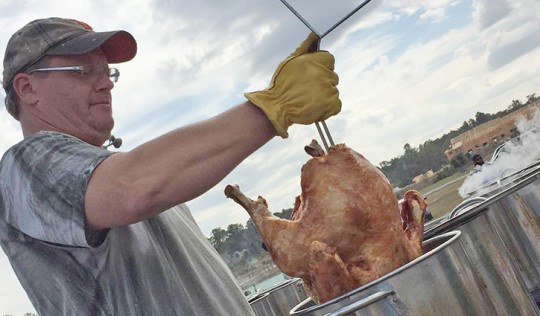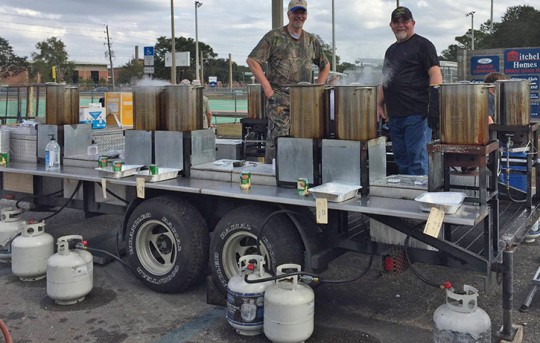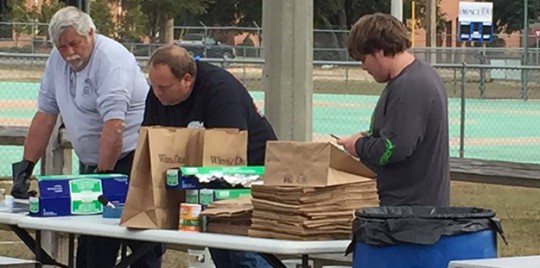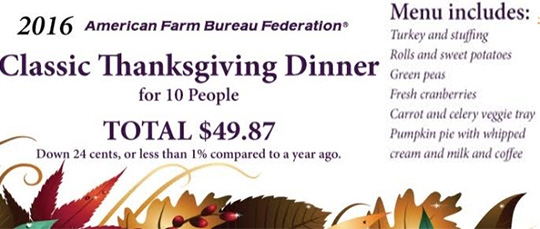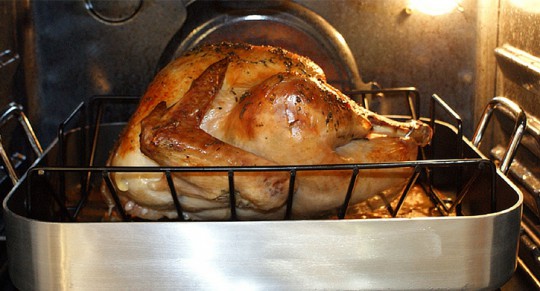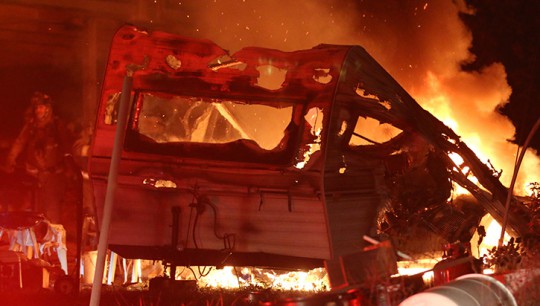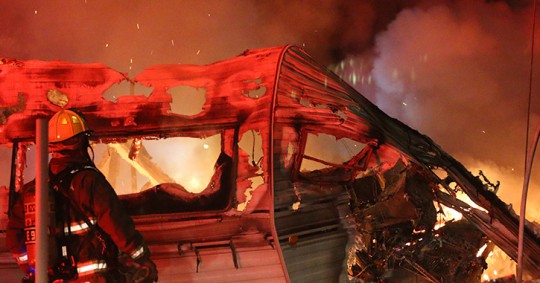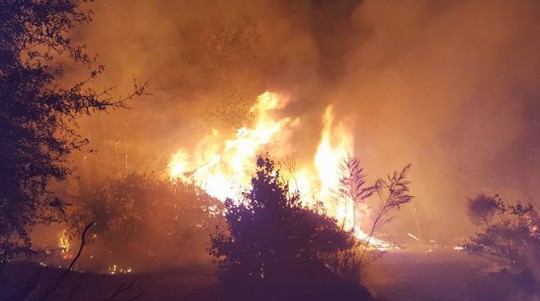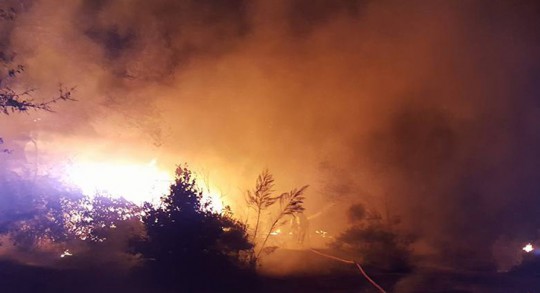Visiting Family Over The Holidays? Five Tips For Keeping The Peace
November 24, 2016
by Samantha Grenrock, UF/IFAS
With the election behind us and the holidays ahead, many are probably wondering how to avert conflicts at upcoming family gatherings — events that are often already a source of stress, no matter the year, says a human development expert with the University of Florida Institute of Food and Agricultural Sciences.
“The increase in togetherness with family members during the holidays can be wonderful, but being with people you don’t normally see for extended periods of time can only increase the likelihood of clashes,” said Heidi Radunovich, associate professor of family, youth and community sciences and UF/IFAS Extension program director for UF Engagement.
For those apprehensive about spending the holidays with family, Radunovich has these tips for making the visit go more smoothly.
1. Agree to take hot button issues — political or otherwise — off the table. “Just because you are related doesn’t mean you share the same world view. While these differences can be ignored most of the time, prolonged periods in close quarters mean different opinions will eventually get voiced,” Radunovich said.
“If there are hot button issues family members know exist, and people simply can’t see eye to eye on them, it can be helpful to set ground rules and agree that those topics won’t be brought up,” she said. “Keep in mind that you can love someone even if you don’t like their views on particular topics.”
2. Make plans as a group and consider individual needs. “Deciding where and how to spend the holidays can set off arguments and lead to hurt feelings,” Radunovich said. “Make sure that people are part of the planning and agree to how things will go.” Topics to discuss ahead of time may include food preparation, travel plans and how you will handle family traditions, she said.
3. Don’t feel the need to do everything as a group. “Expecting everyone to be together all the time can be stressful for all involved, so allowing opportunities for the group to break off to do separate activities can help,” Radunovich said. “For example, set aside activities for children that can allow grown-ups the option of watching sports, reading a book or doing something else on their own.”
4. If conflicts do arise, stay calm. “It’s a lot easier to have a productive discussion if everyone is calm. If you or other family members get into a fight, do what you can to keep or regain everyone’s composure before moving forward,” said Radunovich.
“Regaining composure may mean removing yourself from the situation for a while. You can try leaving the room, going for a walk, listening to music or engaging in some other soothing activity,” she said. “When you come back, it will be easier to see one another’s points of view, and come up with creative solutions and compromises.”
5. Don’t expect perfection. “We can put pressure on ourselves to make the holidays perfect. When our unrealistic expectations don’t come true, this can lead to stress and frustration,” Radunovich said. “There are already a lot of stressors associated with the holidays that can tap out our resources for coping, making it harder to deal with even minor stressors. Keep in mind that the goal is to enjoy your time together, and avoid trying to cram in too many events, or making every meal or event perfect.”
Miracle League Holds Annual Turkey Fry
November 24, 2016
 The Miracle League of Pensacola held their annual turkey fry fundraiser Wednesday at their park on East Nine Mile Road.
The Miracle League of Pensacola held their annual turkey fry fundraiser Wednesday at their park on East Nine Mile Road.
Volunteers with the Miracle League spent their day frying turkeys for a minimum donation, with all of the proceeds going to benefit the Miracle League.
The Miracle League provides physically and mentally challenged children a safe and spirited program in which they can hit, run, and catch on a baseball field – just like other kids. MLP offers a unique and memorable opportunity these children would not otherwise have. It is a place where every player plays, every player hits, every player gets on base, every player scores, and every player wins – every inning.
Photos for NorthEscambia.com, click to enlarge.
Cook Carefully This Thanksgiving to Prevent Kitchen Fires
November 24, 2016
The U.S. Consumer Product Safety Commission (CPSC) is alerting consumers that the threat of fires in the kitchen triples on Thanksgiving Day. From 2009 through 2011, there was an average of about 1,300 cooking fires on Thanksgiving Day. This is more than three times the average daily rate from 2009 through 2011 of about 400 cooking fires a day.
“As fire safety experts have said for years, ‘Stand by your pan!’” said CPSC Chairman Inez Tenenbaum. “If you are frying, grilling or broiling food, stay in the kitchen. Not following this advice can be a recipe for disaster on Thanksgiving and throughout the year.” When it comes to fires in the home, cooking fires are number one. They accounted for nearly 150,000 fires (more than 40 percent of all annual unintentional residential fires) each year from 2009 through 2011. Unattended cooking is the top cause of cooking fires. Cooking fires also caused the most home fire-related injuries, with an estimated annual average of nearly 27 percent, or 3,450 injuries each year.
Overall, CPSC estimates an average of 362,300 unintentional residential fires, 2,260 deaths, 12,820 injuries and nearly $7 billion in property damage attended by the fire service occurring each year between 2009 and 2011.
To stay safe in the kitchen, avoid wearing loose-fitting clothing with long sleeves near ranges or ovens, watch children closely so they don’t come into contact with cooking food or hot stovetops, turn pan handles toward the back of the stove to prevent kids and others from spilling a pan’s scalding contents onto themselves.
In the event of a fire, call 911. Cover a pan with a lid to smother the flames. Never pour water or flour on a fire. That can make it worse. Keep a fire extinguisher in the kitchen.
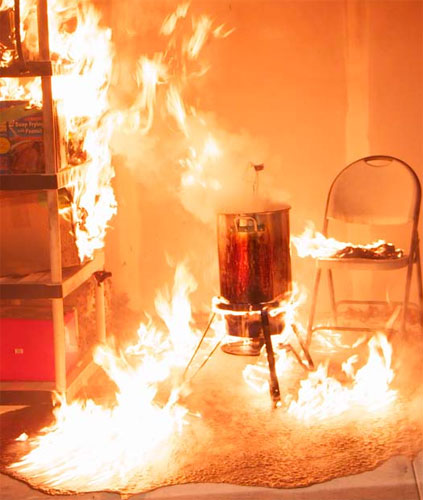 “Turkey fryer fires can be explosive and result in serious burns,” said Glenn Gaines, Deputy U.S. Fire Administrator for the United States Fire Administration (USFA). “Only use a turkey fryer outside and away from your home. Never use it in a garage or on a porch. Don’t overfill the oil or leave the turkey fryer unattended.”
“Turkey fryer fires can be explosive and result in serious burns,” said Glenn Gaines, Deputy U.S. Fire Administrator for the United States Fire Administration (USFA). “Only use a turkey fryer outside and away from your home. Never use it in a garage or on a porch. Don’t overfill the oil or leave the turkey fryer unattended.”
Since 2003, there have been more than 125 turkey fryer-related fires, burns, explosions, smoke inhalations, or laceration incidents reported to CPSC staff. There were 55 injuries among these incidents, but none were fatal. For the incidents reporting a dollar value for the property loss, the total loss reported was around $6 million. Additional incidents involving turkey fryers may have occurred that were not reported to CPSC.
Consumers should also protect themselves by installing smoke alarms in their homes. “Roughly three out of five home fire deaths happen in homes with no smoke alarms or no working smoke alarms,” said Jim Shannon, President of the National Fire Protection Association. “Smoke alarms save lives. Having a working smoke alarm cuts the chances of dying in a fire in half.”
Change the batteries in smoke alarms at least once every year and test the alarms every month to make sure they are working.
To provide a better warning of a fire and more escape time, install more than one alarm and interconnect all smoke alarms in the home. Interconnected alarms speak to one another, so if there is a fire in one part of the house, the interconnected alarms sound throughout the house and alert consumers to the fire more quickly.
For the best protection, install alarms on every level of the home, outside sleeping areas and inside each bedroom, and use both ionization and photoelectric alarms. Alarms that are powered by house wiring should have a battery backup.
Smoke alarms provide the warning, but every family should have a fire escape plan as well. Practice the escape plan with everyone in the house so they can get out quickly. The escape plan should include two ways out of each room (as practical) and a family meeting place that is outside where everyone can meet if there is a fire in the home.
Holiday Cooking Can Be Bad For ECUA Sewers And Home Plumbing
November 24, 2016
The Thanksgiving holiday means special times with family, friends, lots of delicious food and the potential for sanitary sewage overflows (SSOs). No matter how the meal is prepared, it will certainly generate fats, oils and grease, or FOG, Which can be damaging to the Emerald Coast Utilities Authority sewer system and your household plumbing.
Keep your plumbing and the sewer system free from blockages and overflows by properly disposing of FOG this holiday season. Many homeowners may be surprised to learn that pouring the fatty remains of culinary delights down the kitchen drain can result in costly and unpleasant SSOs. Besides the mess, untreated sewage can cause health hazards and threaten the environment. Overflows can also require expensive cleanup.
Cooks should avoid depositing other oil-based foods down the drain and garbage disposal. No-nos include fatty substances such as lards or shortening, butter or margarine, food scraps, dairy products, batter and icing, salad dressings and sauces. For more information on ways to keep your kitchen clean and green, visit www.ecua.fl.gov.
Conscientious cooks should:
- Throw food scraps in the trash
- Use a paper towel to wipe away residue from serving dishes and plates
- Rinse these items over a sink strainer to catch and dispose of any remaining food particles
Any grease left-over from holiday cooking should be poured into a heat-safe can, place it in the freezer to cool and harden, and toss the can out with regular garbage. If you’re planning to deep-fry a turkey, put the used fryer oil back in its original container or use an ECUA Cooking Oil Disposal Container. Drop it off at an ECUA Disposal Station to be recycled into biodiesel fuel. ECUA has several conveniently placed stations throughout the community:
Grocery Advantage
736 Hwy 29 North, Cantonment
Keep Pensacola Beautiful
3303 North Davis Highway
Ever’man’s
315 West Garden Street
ECUA at Ellyson Industrial Park
9255 Sturdevant Street
ECUA Sanitation Department
3050 Godwin Lne
ECUA Bayou Marcus Water Reclamation Facility
3050 Fayal Drive
Pensacola Beach Via de Luna Drive
53 Via DeLuna Drive
Adjacent to ECUA Pensacola Beach Wastewater Treatment Plant.
Aboard NAS Pensacola (Military and Base Personnel ONLY)
Andrew Jackson Court
Slemmer Avenue
Murray Street and Billingsley Street
Corry Field Housing at NAS Corry Station
Perdido Key
12950 Gulf Beach Highway
For additional information visit the ECUA website www.ecua.fl.gov or call ECUA Customer Service (850) 476-0480.
Average Cost Of Thanksgiving Dinner Down This Year
November 24, 2016
The American Farm Bureau Federation’s 31st annual informal price survey of classic items found on the Thanksgiving Day dinner table indicates the average cost of this year’s feast for 10 is $49.87, a 24-cent decrease from last year’s average of $50.11.
The big ticket item – a 16-pound turkey – came in at a total of $22.74 this year. That’s roughly $1.42 per pound, a decrease of 2 cents per pound, or a total of 30 cents per whole turkey, compared to 2015.
“Consumers will pay less than $5 per person for a classic Thanksgiving dinner this year,” AFBF Director of Market Intelligence Dr. John Newton said. “We have seen farm prices for many foods – including turkeys – fall from the higher levels of recent years. This translates into lower retail prices for a number of items as we prepare for Thanksgiving and confirms that U.S. consumers benefit from an abundant, high-quality and affordable food supply.”
The AFBF survey shopping list includes turkey, bread stuffing, sweet potatoes, rolls with butter, peas, cranberries, a veggie tray, pumpkin pie with whipped cream, and coffee and milk, all in quantities sufficient to serve a family of 10 with plenty for leftovers.
Foods showing the largest decreases this year in addition to turkey were pumpkin pie mix, milk and a veggie tray comprised of celery and carrots. A 30-ounce can of pumpkin pie mix was $3.13; a gallon of milk, $3.17; a one-pound veggie tray of celery and carrots, $0.73; and a group of miscellaneous items including coffee and ingredients necessary to prepare the meal (butter, evaporated milk, onions, eggs, sugar and flour), $2.81.
“Due to a significant expansion in global milk production, prices fell to the lowest levels since 2009, leading to lower retail milk and dairy product prices. Additionally, this year’s pumpkin prices are slightly lower following the production decline and higher prices seen in 2015,” Newton said.
Items that increased modestly in price were a dozen brown-and-serve rolls, $2.46; two nine-inch pie shells, $2.59; one pound of green peas, $1.58; 12 ounces of fresh cranberries, $2.39; a half-pint of whipping cream, $2.00; a 14-ounce package of cubed bread stuffing, $2.67; and a three-pound bag of fresh sweet potatoes, $3.60.
The average price is down slightly from last year to $49.87. After adjusting for inflation, the cost of a Thanksgiving dinner fell to $20.66 – the lowest level since 2010.
Although the classic Thanksgiving meal priced by Farm Bureau is considered modest by some, “we’re fortunate to live here in America, where many people are able to enhance their holiday meals with another type of meat or additional side dishes or desserts,” Newton said.
The stable average price reported this year by Farm Bureau for a classic Thanksgiving dinner tracks closely with the government’s Consumer Price Index for food eaten at home. The most recent CPI report for food at home showed just over a 2-percent decline over the past year.
Volunteer shoppers checked prices at grocery stores in 40 states for this year’s survey. Farm Bureau volunteer shoppers are asked to look for the best possible prices, without taking advantage of special promotional coupons or purchase deals, such as spending $50 and receiving a free turkey.
Shoppers with an eye for bargains in all areas of the country should be able to purchase individual menu items at prices comparable to the Farm Bureau survey averages. Another option for busy families without a lot of time to cook is ready-to-eat Thanksgiving meals for up to 10 people, with all the trimmings, which are available at many supermarkets and take-out restaurants for around $50 to $75.
The AFBF Thanksgiving dinner survey was first conducted in 1986. While Farm Bureau does not make any scientific claims about the data, it is an informal gauge of price trends around the nation. Farm Bureau’s survey menu has remained unchanged since 1986 to allow for consistent price comparisons.
Tips For An Energy Efficient Thanksgiving
November 24, 2016
It’s that time of year. Soon homes will be filled with the smells of oven-roasted turkey, candied yams, mashed potatoes and gravy, and stuffing from that special passed-down family recipe. And who could forget the pies!
Traditionally, Thanksgiving is the start of the holiday cooking season when kitchen appliances receive a lot of extra use when you’re preparing meals to be shared with loved ones and family members.
But no matter how much love and attention go into the special holiday favorites, Thanksgiving and the holidays are also a peak time for gobbling up energy, especially when the oven and kitchen appliances are working non-stop.
“Today’s new kitchen appliances use nearly 50 percent less energy than those from 10 years ago,” said Natalie Smith, Gulf Power spokesperson. “But when the holidays roll around, energy usage can rise when they get an extra workout and it can add up quickly. However, you may not have to use as much energy as you think by following a few simple tips.”
Thankfully, there are plenty of ways to keep holiday energy costs to a minimum. Here are some no-cost ways to save money and energy in the kitchen and be thankful for the savings on your November energy bills:
Cooking
· Oven preheating is usually not required and wastes energy. When preheating is required, avoid preheating longer than necessary. Preheating takes about eight minutes.
· Turn off the oven a few minutes before cooking is finished. Retained heat will complete the job.
· Use the microwave whenever possible, it’s the most efficient way to cook or reheat food.
· Don’t use your range or oven to heat the kitchen. It’s inefficient and can be a safety hazard.
· Choose pots and pans that have wide flat bottoms that just cover the burner. They will absorb all the heat and cook food more evenly. Aluminum pans with flat bottoms, straight sides, and tight fitting lids are best for energy savings.
Dishwasher
* Proper loading is important. Operate only when it is filled to capacity.
* If manufacturer’s instructions permit, open the door of your dishwasher after the last rinse cycle to allow moisture to escape and the dishes to dry as they cool. Some units have a “power-saver switch” that automatically eliminates the drying cycle.
Refrigerator
* Keep the refrigerator between 37º and 40º and the freezer setting at 0º.
* Keep condenser coils clean. Vacuum the coils at least twice a year.
* Make sure the door gasket seals tightly.
* Let hot foods cool before placing them in the refrigerator.
* Position the refrigerator away from heat sources. If the unit has back coils, position it at least 4″ from the wall.
* Avoid keeping the refrigerator door open.
* Think about getting rid of your extra refrigerator or freezer as they generally are inefficient and can cost two to three times more to operate per month.
Thermostat
· If you’re having a large group of people over, make sure to adjust the thermostat before guests arrive.
· If it’s cold outside, lower the thermostat a degree or two. The body heat from guest as well as the heat from all that cooking, will raise your home’s temperature without having to run the furnace.
FWC: Guide To Northwest Florida’s Fall Hunting Seasons
November 24, 2016
The Thanksgiving weekend means hunting in North Escambia. Here’s a loook at fall hunting information from the Florida Fish and Wildlife Conservation Commission (FWC):
General Gun Season
The general gun seasons begins Thanksgiving day and last four days (through Sunday). Two weeks later, the gun season reopens December 10 and runs through February 19.
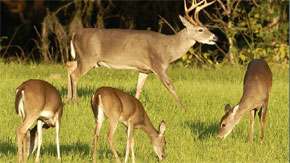 During general gun season, only legal-to-take bucks as they are defined in each deer management unit may be harvested, but don’t forget that you need to purchase the $5 deer permit first. On private land, the daily bag limit on deer is two. Bag limits and other regulations for deer on wildlife management areas can differ, so before you hunt download the specific WMA brochure by going to MyFWC.com/Hunting.
During general gun season, only legal-to-take bucks as they are defined in each deer management unit may be harvested, but don’t forget that you need to purchase the $5 deer permit first. On private land, the daily bag limit on deer is two. Bag limits and other regulations for deer on wildlife management areas can differ, so before you hunt download the specific WMA brochure by going to MyFWC.com/Hunting.
You can hunt wild hogs on private lands year-round with no bag or size limits. Similarly, on most public lands there are no bag or size limits, and hogs are legal to take during most hunting seasons except spring turkey. On a few public hunting areas, specific bag and size limits do apply, so check the WMA brochure to be certain.
Hunters are allowed to take deer and wild hogs over feeding stations on private land, but that’s not the case on WMAs, no matter the season or the game.
It’s illegal to take deer using rimfire cartridges or non-expanding, full-metal case ammunition. Shooting a swimming deer also is against the law.
Private Land Does Days
Within the general gun season are antlerless deer days, better known to us hunters as “doe days.” These dates differ for each of the state’s 12 DMUs. To learn when these antlerless deer opportunities occur in your DMU, please refer to the “2016-2017 Florida Hunting Regulations” handbook, which you can pick up at your tax collector’s office, FWC regional office or by downloading it online at MyFWC.com/Hunting.
During these doe days, the daily bag limit is one legal antlered deer and one antlerless deer, or two legal antlered deer. You may not take two antlerless deer in one day as is allowed during the archery season, unless you have antlerless deer tags issued for the private land you hunt. Also, regardless of the season, deer gender or the number of permits, hunters are never allowed to harvest more than two deer per day under any circumstances. And except for a few WMAs, most do not have antlerless deer days.
Deer Dogs
Folks hunting deer with dogs on private or public lands, where it is allowed, must have their names and addresses displayed on their dogs’ collars. Hunters must confine their dogs to the tract of land on which they have permission to hunt and not allow them to wander off that land.
Hunters using dogs to take deer on private property must register the tract of land they will be hunting. The statewide deer-dog registration program doesn’t apply for training or hunting with deer dogs on WMAs.
The registration number may be issued to hunting clubs, landowners or anyone having permission to hunt deer with dogs on a particular tract of land upon filling out the required application. Application forms are available from all regional FWC offices and at MyFWC.com/Deer.
Once you’ve registered the property, you’ll be issued a number that must be attached to the collars of all dogs used to run deer on that property, when taking deer with dogs is permitted. All individuals must have a copy of the registration with them while they’re engaged in training or hunting with deer dogs.
Fall Turkey And Quail
Fall turkey season starts December 10, the same day as general gun season, and ends January 15.
Hunters may take only bearded turkeys and gobblers, and they must have a turkey permit ($10 for residents, $125 for nonresidents) to hunt them.
You may harvest up to two turkeys per day, if you’d like, but that would tag you out for the entire fall season – because you’re only allowed to harvest a total of two turkeys during the archery, crossbow, muzzleloading gun and fall turkey seasons combined. In Holmes County, the harvest of fall turkeys is not allowed at all. And there’s not a fall turkey season on WMAs, however, on a half-dozen areas, you are allowed to take turkeys during general gun season.
You’re not permitted to hunt turkeys with dogs or with recorded turkey calls, and you’re not permitted to shoot them while they’re on the roost or when you’re within 100 yards of a game-feeding station when feed is present.
The excitement the uproar a covey of bobwhite quail cause when suddenly taking to the air in front of a pointing bird dog is enough to thrill even the most seasoned veteran hunter. Quail season this year runs Nov. 12 – March 5, and the daily bag limit is 12. Bobwhites prefer a patchwork of brushy fence rows, weedy fields and open upland forests that are frequently burned. A good bird dog is essential in quail hunting and, for many hunters, watching the dog work and seeing its enjoyment is the most rewarding part.
Other Regulations
Shooting hours for deer, turkeys and quail are a half-hour before sunrise to a half-hour after sunset. All legal rifles, shotguns, muzzleloaders, bows, crossbows and handguns may be used to take each of these resident game animals during the general gun, fall turkey and quail seasons.
llegal firearms and ammunition are defined as centerfire, semiautomatic rifles having magazine capacities of more than five rounds, and fully automatic firearms. Other prohibited methods for taking game include shooting from a moving vehicle and herding or driving game with a vehicle.
Snipe and Dove
lorida ranks second in the nation in the number of snipe harvested each year, and the season always runs Nov. 1 – Feb. 15. Snipe hunting can offer unparalleled excitement as snipe fly with a fast, erratic flight pattern, presenting a challenge for hunters. The skill it requires to shoot a moving snipe is probably the main reason many hunters trounce through mud and muck to locate and flush snipe. The common snipe is a migratory game bird that is found in Florida only during the winter months, mostly in shallow wetlands, low pastures and open shorelines of lakes, ponds and streams. Hunting strategy is simple – find their habitat and walk until you flush one. And a close-working bird dog or retriever can be helpful in finding, flushing and retrieving snipe.
The second phase of the mourning and white-winged dove season this year runs Nov. 12 – Dec. 5. Shooting hours for both dove and snipe is a half-hour before sunrise to sunset.
There’s an eight-bird daily bag limit on snipe and a 15-bird bag limit on dove, and you must have the no-cost migratory bird permit if you want to hunt either of these migratory game birds.
The only firearm you’re allowed to hunt snipe and doves with is a shotgun, although you can’t use one larger than a 10-gauge. Shotguns also must be plugged to a three-shell capacity (magazine and chamber combined).
You may hunt either of these birds over an agricultural field, as long as the crop has been planted and manipulated by normal agricultural methods. However, you’re not allowed to scatter agricultural products over an area for the purpose of baiting.
If you’re up for the challenge, you may even use a bow or crossbow. Birds of prey also can be used to take snipe and doves by properly permitted individuals practicing falconry.
Some things you can’t do while hunting snipe and doves include using rifles or pistols, shooting from a moving vehicle, and herding or driving birds with a vehicle.
The FWC provides an online update that gives the latest information on Florida’s public dove fields. The address is MyFWC.com/Dove, and it’s updated throughout dove season. Information includes dove densities, previous week’s harvests and field conditions.
License And Permit Requirements
Florida ranks second in the nation in the number of snipe harvested each year, and the season always runs Nov. 1 – Feb. 15. Snipe hunting can offer unparalleled excitement as snipe fly with a fast, erratic flight pattern, presenting a challenge for hunters. The skill it requires to shoot a moving snipe is probably the main reason many hunters trounce through mud and muck to locate and flush snipe. The common snipe is a migratory game bird that is found in Florida only during the winter months, mostly in shallow wetlands, low pastures and open shorelines of lakes, ponds and streams. Hunting strategy is simple – find their habitat and walk until you flush one. And a close-working bird dog or retriever can be helpful in finding, flushing and retrieving snipe.
The second phase of the mourning and white-winged dove season this year runs Nov. 12 – Dec. 5. Shooting hours for both dove and snipe is a half-hour before sunrise to sunset.
There’s an eight-bird daily bag limit on snipe and a 15-bird bag limit on dove, and you must have the no-cost migratory bird permit if you want to hunt either of these migratory game birds.
The only firearm you’re allowed to hunt snipe and doves with is a shotgun, although you can’t use one larger than a 10-gauge. Shotguns also must be plugged to a three-shell capacity (magazine and chamber combined).
You may hunt either of these birds over an agricultural field, as long as the crop has been planted and manipulated by normal agricultural methods. However, you’re not allowed to scatter agricultural products over an area for the purpose of baiting.
If you’re up for the challenge, you may even use a bow or crossbow. Birds of prey also can be used to take snipe and doves by properly permitted individuals practicing falconry.
Some things you can’t do while hunting snipe and doves include using rifles or pistols, shooting from a moving vehicle, and herding or driving birds with a vehicle.
The FWC provides an online update that gives the latest information on Florida’s public dove fields. The address is MyFWC.com/Dove, and it’s updated throughout dove season. Information includes dove densities, previous week’s harvests and field conditions.
Fire Destroys Travel Trailer Near McDavid
November 24, 2016
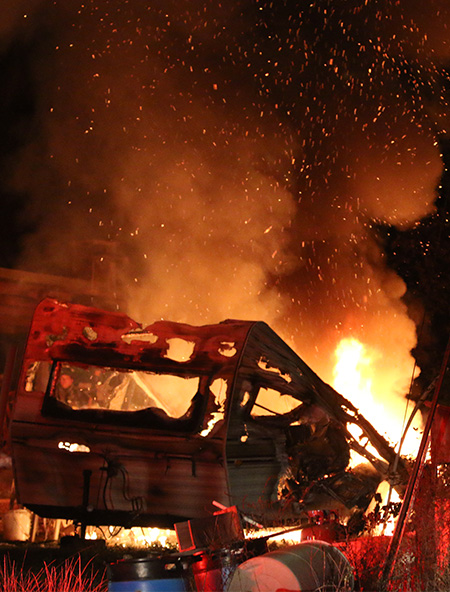 Fire destroyed a travel trailer at a home outside McDavid Wednesday night.
Fire destroyed a travel trailer at a home outside McDavid Wednesday night.
The occupant of the travel trailer in the 2000 block of Cox Road was not at home at the time of the blaze, and there were no injuries reported. The trailer was fully involved when the first firefighters arrived on scene and was a total loss.
There was no immediate work on the cause of the blaze.
NorthEscambia.com photos, click to enlarge.
Fire Destroys Abandoned Home Near Berrydale
November 24, 2016
Fire destroyed an abandoned home off Greenwood Road in Berrydale in northern Santa Rosa County Tuesday night. The cause of the fire is under investigation by the Florida State Fire Marshal’s Office. There were no injuries reported. Courtesy photos for NorthEscambia.com, click to enlarge.
Warm Thanksgiving; Chance Of Rain Next Week
November 24, 2016
Here is your official North Escambia area forecast:
Thanksgiving Day: Isolated showers. Otherwise, partly sunny, with a high near 77. Calm wind becoming southwest around 5 mph in the morning. Chance of precipitation is 20%.
Thursday Night: Partly cloudy, with a low around 53. South wind around 5 mph becoming calm in the evening.
Friday: A 20 percent chance of showers before noon. Mostly sunny, with a high near 76. Calm wind becoming northwest around 5 mph in the afternoon.
Friday Night: Mostly clear, with a low around 46. North wind around 5 mph.
Saturday: Sunny, with a high near 69. North wind around 5 mph.
Saturday Night: Mostly clear, with a low around 39. North wind around 5 mph.
Sunday: Sunny, with a high near 70. Northeast wind around 5 mph becoming south in the afternoon.
Sunday Night: Partly cloudy, with a low around 49. Southeast wind around 5 mph.
Monday: A 20 percent chance of showers. Partly sunny, with a high near 75.
Monday Night: A 30 percent chance of showers. Mostly cloudy, with a low around 63.
Tuesday: Showers and thunderstorms likely. Mostly cloudy, with a high near 76. Chance of precipitation is 60%.
Tuesday Night: A 40 percent chance of showers and thunderstorms. Mostly cloudy, with a low around 53.
Wednesday: A 20 percent chance of showers. Mostly sunny, with a high near 68.


